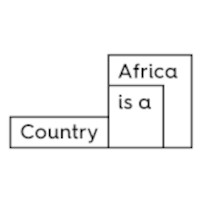In doing the intellectual activist work of editing and supporting cultural production, literary magazines have been crucial for Black cultural renaissance.
Covers of The Crisis, Tropiques and Staffrider. Courtesy Revolutionary Papers ©.
This post is part of the “Revolutionary Papers” series.
In this realm as in any other, I believe in the pure Surrealist joy of the man who, forewarned that all others before him have failed, refuses to admit defeat, sets off from whatever point he chooses, along any other path save a reasonable one, and arrives wherever he can.
– The Manifesto of Surrealism
Literary magazines have been at the center of a black transnational cultural renaissance. This is not where I intended to end up when I first encountered Ethiopia (Awakening), 1921—a sculpture by Meta Vaux Warrick Fuller (1877-1968), an important artwork created at the dawn of the Harlem Renaissance—at the 59th Venice Biennale in 2022. The sculpture was in the part of the exhibition titled The Witch’s Cradle, featuring artists that “were close to the dominant avant-garde movements of their time.”
True to the curatorial vision, Fuller’s sculpture is often described as the first pan-African American work because it connected Ethiopia, the only independent African country at the time, to the emerging Black society in America. Fuller belongs on a long list of artists and writers who were championed by the 20th-century American intellectual, W.E.B. Du Bois. He regarded The Crisis, a literary magazine he founded in 1910, as the Negroes’ “chief talent scout,” introducing various painters on the magazine’s covers, and publishing novelists and poets such as Langston Hughes, who were pivotal to the Harlem Renaissance.
The section of the biennale with Fuller’s sculpture further described the artists as engaged with “Surrealism’s exploration of the body from within, […] and the Harlem Renaissance and Négritude movements’ revaluation of cultural identity.” Considering the legacy of The Crisis—and therefore Du Bois as editor—in the Harlem Renaissance, prompted me to question what it might mean to think of literary magazines as being particularly Black Surrealism.
André Breton published the “Manifesto of Surrealism” in 1924. Defining surrealism as “psychic automatism in its pure state, by which one proposes to express—verbally, by means of the written word, or in any other manner—the actual functioning of thought,” Breton named, within that frame, many writers and artists and, I want to imagine, journal and magazine editors like Du Bois, as well as the avant-garde way of thinking about internationalism he was preaching (literally) in The Crisis.
Aimé Césaire’s Poetry and Knowledge, extending as it does Breton’s manifesto, can be seen as a gesture towards Black Surrealism. In the fourth of his seven propositions in the text, Césaire writes, “It is conceivable that nothing can resist the unheard-of mobilization of forces that poetry necessitates, or the multiplied élan of those forces.” This is something editors of literary magazines have understood across the Black diaspora. I want to think of this, Black Surrealism, in concert with what scholar Bwesigye Bwa Mwesigire, in response to what Carli Coetzee, the editor of the Journal of African Cultural Studies, defines as literary activism:
Coetzee’s keynote establishes a theoretical framework for the intellectual activist work done through journal editing and the building of communities that centre Africa-based scholars and intellectual traditions nurtured on the continent itself. […] I define literary activism here to mean the work of building Africa-based and focused infrastructure to support literary and cultural production. […] Activist work is political. The work of literary activism is therefore inherently ideological. It is aimed at bringing forth change in the production, and circulation of literature.
Seven years after Du Bois resigned as editor of The Crisis, continuing influential work and thinking with the Pan African Congress, cultural theorist Suzanne Césaire and her partner Aimé Cesaire started Tropiques in Martinique in 1941. A literary magazine with a pan-Caribbean vision, its philosophy was about Negritude, and many Surrealists, including Breton, saw the magazine as embodying a surrealist theoretical lens. The work of Tropiques and The Crisis as literary magazines was essential for the Harlem Renaissance and Negritude movements—zeitgeist shifting, both committed to ideas of racial uplift that rippled throughout movements. Appreciating what Bwa Mwesigire calls literary activism when writing about contemporary literary production in Africa, I am trying to trace a very specific idea that goes back to/before/beyond independence and postcolonial and anti-apartheid movements; that places literary magazines at the center of a Black cultural renaissance.
In 1957, Black Orpheus, a journal of African and Afro-American literature was founded in Ibadan, Nigeria. Between 1961 and 1967, Transition magazine was published in Kampala, Uganda. After the African literature defining conference of 1962—the African Writers Conference—at Makerere University, Rajat Neogy, the founder of Transition invited some of the writers to his house and he got them to write for the magazine. Responses and debates about conference topics were published in Transition. It was also from these debates that Kenyan writer Ngugi wa Thiong’o later wrote Decolonising the Mind: The Politics of Language in African Literature, a key text on language and non-Western forms of knowledge production. The magazine also published Okot p’Bitek, Chinua Achebe and Wole Soyinka, writers who have been seminal socio-political thinkers for post-colonial Africa. Soyinka, who was also the editor of Transition in its Accra iteration said of it:
Transition was one of the instruments for bringing Africa together internally and turning the face of Africa towards the African diaspora as well. In other words, it was the same kind of anticolonial and inward-looking agency for Africans’ postcolonial existence. And so, given that background, we didn’t really know too much about East Africa. We knew people like Robert Serumaga, for instance, we knew about Okot p’Bitek, simply through literature that had been filtered in that way, and also through the instrumentation of Black Orpheus. But in terms of a quantitative knowledge and interaction with East Africa, it was through Transition magazine that this really came about.
Realizing the kind of reach that Transition was having in terms of intellectual activist work, the Ugandan government arrested Rajat Neogy, which led to the journal leaving Kampala. Other Ugandan governments have continued in the persecution of literary and intellectual activist work, most recently with the exiled poet Dr. Stella Nyanzi. As Breton conceived of it, surrealism “asserts our complete nonconformism clearly enough so that there can be no question of translating it, at the trial of the real world, as evidence for the defense.” I am attempting to read these literary magazines within the frame of this cultural movement not only because of their ethos, structures and methods, but also thinking of individual artists and writers that belong to it, magazines gather. To think Black Surrealism is to think collective.
In 1978, Staffrider magazine was started in Johannesburg, and was published until 1996. At the Revolutionary Papers Conference in April 2022, Nombuso Mathibela gave a sonic lecture titled Continental Staffriders’ Liberation Bonfires and Dance. Mathibela’s set and her subsequent response was a generous attention to connections between literature and music. Mathibela theorized about doing music in the format of writing groups by way of editing and giving feedback to each other, which was the Staffrider format. Positioning this as a Black Music format, Mathibela gestured towards thinking of “staffriding” as a form of fugitiveness, making space for a different way of seeing and doing things.
In 1983, Staffrider magazine published a special issue titled South Africa Through the Lens: Social Documentary Photography, which was made up of photographs that had been part of an exhibition at the Market Photo Gallery by the same title. The photographs were said to be seen through a lens not that of the ruler, and presented a South Africa “in conflict, in suffering, in happiness and in resistance. They examine the present and beckon the viewer to an alternative future.” The exhibition and therefore this magazine issue, which served as an archive in offering a complex and multifaceted view of South Africa, was not meant to develop some thesis.
These literary magazines form part of a canon that heralded many of the critical ideas we hold about blackness today, with many writers who have defined the African cultural landscape getting published in them. They were formed in critical moments—just before independence, or for South Africa, at a time when Black people were building the structures for the nation they wanted—what for example Neogy describes in Transition’s first editorial as “a time for testing intellectual and other preconceptions.” So the fiction, poetry, and literary criticism that they published was responsive to and reflective of the times.
Breton wrote of the Surrealist voice as “the one that continues to preach on the eve of death and above the storms”, and in doing the intellectual activist work of editing and supporting cultural production, many literary magazines (and therefore editors) have been crucial for Black cultural renaissance.






